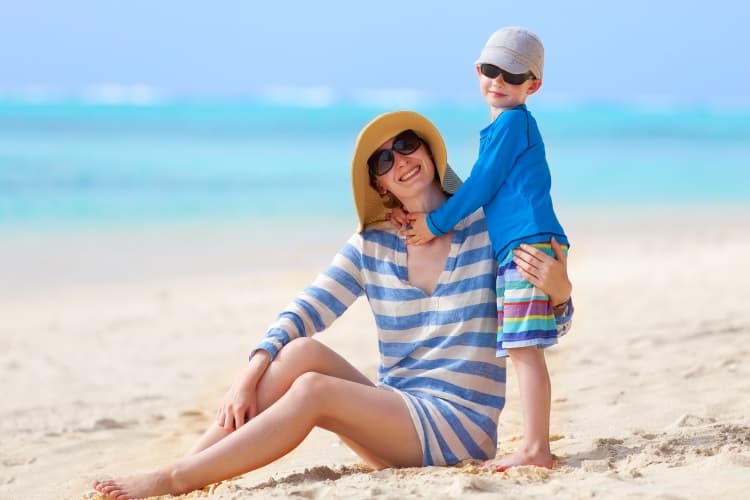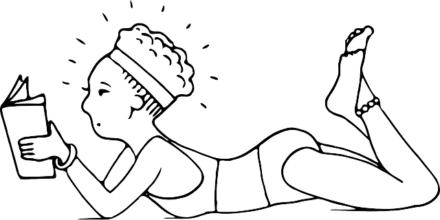
When looking at the “Age groups most affected by tanning addiction” I was surprised to find that age made a difference. We have different areas of susceptibility to tan addiction.
Just because I am a grandmom, there are still influences for me to take risks with my skin and sun exposure.
Do you fit your appropriate age group with your tanning thinking? Are you willing to make some changes? Realizing that I can be influenced was surprising to me, but it definitely is a possibility. What about you?
- Different age groups and their susceptibility to a tan addiction
- Risks faced by younger individuals in pursuit of a tan
- Challenges faced by older adults in breaking tanning habits
If you think adolescents and young adults are more apt to become tanning addicts, you are correct. But this group is not alone. Middle age adults as well as older adults are well represented in the addicted phase of tanning.
The National Libriary Of Medical Science reports that non-hispanic females ages 16 to 34 were the ages most represented in reported tanning addiction.
“Tan Addiction Unveiled: Exploring Age Groups, Risks, and Challenges”
I have decided to take time out from just Sun Blocking Clothing and delve into the fascinating world of tanning addiction. The mystery of a tan addiction is a bit unsettling, and something that I think about.
In this post, we’ll explore the different age groups most affected by this phenomenon.
I would like to share the unique challenges faced by older adults in breaking the addiction.
So I have in mind an informative journey into the world of tanning and its impact on our skin health. I hope this hits home for all of us.
Makes every reader realize that they are at risk if they are.

Recognizing a Tan Addiction
I might consider someone with this much tan as someone with a tanning addiction. Would I be right? Maybe.
According to Wikipedia:
Tanning dependence or tanorexia is a condition where an individual appears to have a physical or psychological dependence on sunbathing or the use of ultraviolet (UV) tanning beds to darken the complexion of the skin.
Compulsive tanning may satisfy the definition of a behavioral addiction as well.
Do you recognize yourself? Are you addicted to a tan?
Hopefully, you will get a bit of information about how to talk about tanning addiction. As you may find your preconceptions challenged. You may be surprised at who falls prey to the allure of the golden tan.
Adolescents and Young Adults
Our younger age groups, primarily adolescents and young adults, are often at the forefront of the tanning addiction spectrum.
Surprisingly, studies show that this obsession with achieving the perfect tan is prevalent among a significant portion of this demographic. But what drives this behavior?
One contributing factor is the societal pressure to conform to beauty standards. These standards often prioritize a tanned complexion as a symbol of attractiveness and vitality.
From social media influencers flaunting their sun-kissed skin to advertisements. They all portray tanned individuals as glamorous and desirable. No one is wearing Sun Blocking clothing, or a sun hat unless it is really pretty.
Sunglasses are often chosen for how they enhance the appearance, not how they protect your eyes and the fragile skin around your eyes.
Is it any wonder young people find themselves caught up in the race for a golden tan?
Moreover, the desire for a tan can also stem from a sense of adventure and rebellion.
The thrill-seeking nature of youth leads them to experiment with tanning methods. From sunbathing, and tanning beds, to self-tanning products.
The allure of the bronzed look becomes irresistible, even if it means taking risks with their skin health. We can all remember feeling bulletproof when we were young.
Added to that is the fact that few tanners in the younger age groups have had skin cancer yet. They get a sunburn, heal right up, and think everything is great and do it over again next weekend.
Why Younger Age Adolescents and Young Adults Are Susceptible To Tan Addiction
As we explore the psychological and societal factors that contribute to this addictive behavior, you may be immediately reminded of someone who is important to you.
By making yourself aware of the psychological and societal factors that contribute to this addictive behavior, you will have a better understanding. You will see the vulnerabilities each age group faces.
Adolescence and young adulthood are stages of life where individuals are often more susceptible to peer pressure. Added to that we have social influences.
In the case of a tan addiction, societal beauty standards and the desire to fit in or conform to a certain ideal can play a significant role.
Younger individuals may feel pressure to have a tan due to media portrayals, and social media influence. In addition, the influence of friends or peers who prioritize tanned skin.
This desire to conform and be accepted can contribute to a higher susceptibility to tan addiction.
Many adolescents and young adults place a high value on physical appearance and attractiveness. They are exploring their identities and seeking validation.
Tanned skin is often associated with a healthy and attractive appearance in some cultures. This can lead individuals to believe that a tan will enhance their attractiveness or boost their self-esteem.
This perception can drive them to engage in excessive tanning behaviors, such as spending excessive time in the sun or using tanning beds.
Young Adolescents Have Limited Awareness
Younger age adolescents and young adults may have a limited understanding of the long-term consequences.
They don’t really understand the risks associated with excessive tanning.
They may not fully grasp the potential health risks. Skin cancer usually occurs when you are older, at least past your teenage years.
Premature aging can arise from prolonged UV exposure. But young people don’t realize that all that sun exposure is adding up. Aging is what is happening to their parents, not them.
When this lack of risk awareness is combined with a desire for immediate gratification? Oh, and don’t forget the belief that they are bulletproof!
Yes, all these factors can make them more susceptible to engaging in addictive tanning behaviors. Tanning without considering the potential consequences.
Tan addiction is a complex issue influenced by various factors, and individual experiences may vary.
Middle-Aged Adults
Middle-aged adults, typically in their 30s to 50s, also display a certain level of susceptibility to tan addiction.
For this group, societal expectations play a big part in how this group sees themselves. They don’t want to be the only one in the golf group who isn’t tan.
Most are busy with a career and families and still interested in taking part in all the activities they have always done. Finding themselves with too much to do for a lot of tanning outside can push them into a tanning booth to get a tan before vacation time.
Or keep the tan going for weekends in the sun.
It is easy to schedule a tan session instead of eating lunch. Stopping by on the way home, or with an early tanning appointment.
The pressure to maintain a youthful appearance can be particularly influential. This is the age where time begins to kick in.
This middle age group of adults faces the natural signs of aging. This includes the appearance of wrinkles and age spots. Some individuals may turn to tanning as a means to regain their perceived lost youthfulness.
Moreover, the rise of social media and the prevalence of filtered images contribute to a sense of comparison and inadequacy.
Seeing others with perfectly bronzed skin can intensify the desire to achieve the same look, leading to excessive tanning habits.
Older Adults
Now, let’s shift our focus to the next age group and explore the influence of tanning addiction on older adults.
Contrary to popular belief, tan addiction is not limited to the younger generation.
Many older adults also find themselves caught in the clutches of this obsession.
For older individuals, the reasons behind tanning addiction can be more complex.
Some may be trying to recapture their youthful appearance. They believe a tan can reverse the effects of aging! Tanned skin makes them feel more confident.
Interestingly, tanning addiction among older adults can also be influenced by a sense of nostalgia. They may have grown up during an era when tanning was highly encouraged and celebrated.
Those deeply ingrained cultural norms can be hard to shake off.
The pursuit of a tan becomes intertwined with their personal history and identity.
Others may be driven by the desire to fit into a particular social group. Some think a tan will help them maintain a certain lifestyle associated with a tanned aesthetic.
With the information we uncover about tanning addiction and how it works for different age groups, we can be more supportive.
If we can understand how different age groups are most affected by tanning addiction, we can avoid the addiction ourselves.
When considering the underlying factors at play, and maybe understand why the risks are taken.
Through continued research, awareness campaigns, and the promotion of healthier alternatives, we can help individuals of all ages. Older adults need help in making informed choices about their skin health.
As well as help in finding healthier ways of breaking free from the grips of a tan addiction.
Older Adults, and Skin Cancer
While a tan addiction may be less prevalent among older adults compared to younger age groups, it can still affect a significant portion of this demographic.
For older adults, a variety of factors come into play. Some may have developed a long-standing habit of tanning that originated during their youth and has persisted throughout their lives.
Additionally, retirement and increased leisure time can contribute to a greater focus on appearance and self-care.
With more available time and fewer work-related responsibilities, older adults may allocate a significant portion of their day to sunbathing.
Or seeking out tanning opportunities, such as golf or tennis or running, or riding bikes in the more dangerous times of the day.
This is the time all the accumulated skin damage will begin to show. Undoing sun damage is difficult, if not downright impossible. Not to mention, expensive!
Obviously, there are areas where these reasons for wanting a tan and becoming addicted to keeping tanned skin will overlap for the different age groups.
Making changes requires a multifaceted approach that takes into account the unique factors affecting each age group.
Education and awareness campaigns aimed at promoting healthy skin habits, debunking beauty standards, and emphasizing the importance of sun protection can be effective in curbing tan addiction across all age groups.
Professionals are Compiling Research and Data
By analyzing the vulnerabilities and influences specific to each age group, we can better understand why individuals fall into the trap of tan addiction.
Through this understanding, they can develop targeted interventions and support systems that empower individuals to make informed choices about their skin health and well-being.
This is why most of us can do nothing to change the behavior of tanning addicts. Even though we approach with the individual’s best interest in mind.
A professional counselor is trained to work with addictions, and they should be considered when a change is getting sidetracked. Don’t hesitate to search for help. This is a serious addiction and sometimes going cold turkey is not the correct route.

Sami’s take on “Age Groups Most Affected by Tanning Addiction
When thinking about the many sides of tanning addiction it is evident there is not a one answer fits all. We all have our reasons for being vernable to a tan addiction.
Yes, living in a sunny part of the world, I have nearly always had tans. During the years of playing in the water all summer, I had more tan. Lots of sunburns.
As I got older and other interests took over, some years I would hardly tan at all.
Now that I have had so many visits to the dermatologist to remove pre-cancer spots as well as waiting for biopsy return information for removed spots that were active. I have had a positive result, which meant more surgery.
Fortunately, I have been made aware of the damage I was doing to my skin. Corrections have been made. For me, adding daily sunscreen, wearing sun blocking clothing, and avoiding the sun between 10 AM and 4 PM has kept me safe.
Such simple steps!
Have you made any changes?
Thank you,
Sami